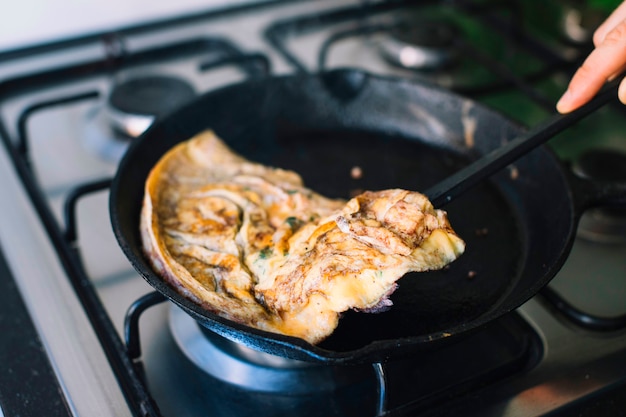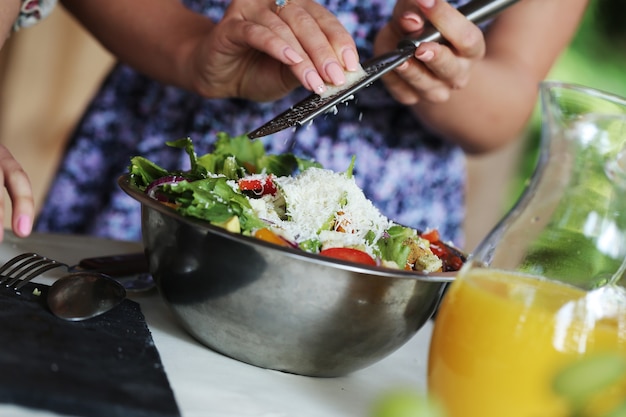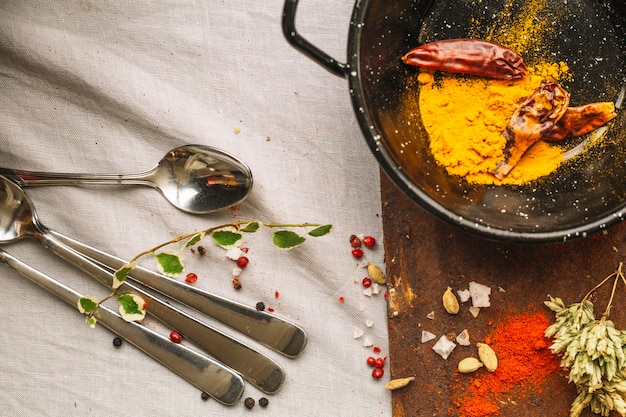Let's talk stir-fry! It's a dish that holds a special place in my heart. Quick, easy, and bursting with flavour – what's not to love? But, let's be honest, there's a difference between a decent stir-fry and one that truly sings. I've been on both sides of that coin, you know? From those underwhelming, overcooked veggie adventures to stir-fries that had everyone reaching for seconds. Over the years, I've learned a thing or two about whipping up a stir-fry that'll have your tastebuds dancing.
This guide is my ode to this incredible dish, a collection of my best tips, tricks, and favourite recipes. Think of it as your personal cheat sheet to stir-fry mastery. We'll start with the essentials, delve into the intricacies of crafting different flavour profiles, and then tackle some common pitfalls – those pesky stir-fry gremlins we all encounter sometimes! Ready? Grab your wok (or a trusty frying pan if you're wok-less), and let's get cooking!
(Part 1) Your Stir-Fry Arsenal: The Essentials

The Wok: Your Stir-Fry HQ
While you can definitely stir-fry without a wok, it's like trying to play a symphony on a kazoo – it'll get the job done, but it won't be the same. The curved sides and wide base of a wok distribute heat evenly, letting your food cook quickly and uniformly. Imagine it as a hot, happy dance for your ingredients! If you're a regular stir-fry aficionado, I'd say a wok is a worthwhile investment. And, let's be honest, it looks pretty darn cool too!
Your Stir-Fry Squad: Essential Tools
Beyond the wok, a few other items will make your stir-fry experience much smoother. Think of them as your trusted kitchen sidekicks:
- A sturdy spatula: You'll need something to toss everything around in your wok. I prefer a wide, flat spatula with a good grip. It should feel like an extension of your hand, gliding effortlessly through the heat.
- A spacious chopping board: A large chopping board is your friend here. You'll be slicing and dicing a lot, so make sure it's big enough to accommodate your ingredients and isn't too slippery.
- Sharp knives: This is a no-brainer, really. Sharp knives are your best friends in the kitchen. They make life easier, safer, and a lot more enjoyable when you're dealing with all those veggies.
(Part 2) The Art of Preparation: Mise en Place and Beyond

Mise en Place: Your Secret Weapon
This might sound fancy, but it's truly a game-changer. "Mise en place" is a French term that basically means "everything in its place." It's about having all your ingredients prepped and ready to go before you even turn on the stove. Slice your veggies, measure your spices, and line up your sauces. Trust me, it's a lifesaver when things start to get hot and frantic in the kitchen.
Chopping Tips: The Right Size Matters
The size of your chopped veggies impacts the texture and cooking time of your stir-fry. You want everything to cook evenly, so it's important to cut things into bite-sized pieces.
Here's a general guide to chopping sizes:
| Vegetable | Size |
|---|---|
| Broccoli | Florets |
| Carrots | Thin slices or matchsticks |
| Peppers | Thinly sliced or diced |
| Mushrooms | Sliced |
| Onions | Thinly sliced or chopped |
The Protein Factor: Don't Forget It
You can add a protein to your stir-fry to make it more filling and satisfying. Chicken, beef, pork, tofu, and prawns are all popular choices. Make sure to cut your protein into bite-sized pieces, and, if you're using meat, give it a quick marinade before cooking. It'll add flavour and help it cook more evenly.
(Part 3) Mastering the Heat: The Key to a Delicious Stir-Fry

The Hot Wok: It's All About the Heat
The key to a delicious stir-fry is high heat. You want to sear your protein and quickly cook your vegetables so they retain their colour and freshness. Get that wok blazing hot before adding your oil, and let it heat up for a good minute or two.
Oil: Your Culinary Companion
Choosing the right oil is crucial. I prefer to use a neutral-tasting oil with a high smoke point like peanut or vegetable oil. It won't burn easily at high temperatures and won't overpower the flavours of your ingredients. And don't be shy with the oil! You want to coat the bottom of your wok generously, creating a nice hot layer for your food to cook in.
(Part 4) The Art of Stir-Frying: A Symphony of Motion
The First Act: The Protein Takes the Stage
Once your oil is sizzling hot, add your protein to the wok. Give it a good sear on all sides, allowing it to develop a beautiful crust. Don't overcrowd the wok; you'll want to cook the protein in batches if necessary.
The Vegetable Ensemble: A Choreographed Entry
After the protein is nicely seared, it's time for the vegetables. Add them to the wok in order of cooking time, starting with the ones that take longer. For example, broccoli florets and carrots will take longer to cook than peppers or mushrooms.
The Conductor's Baton: Stir, Stir, Stir!
Constant movement is the name of the game here. Keep everything moving around in the wok, ensuring that all the ingredients cook evenly. Don't be afraid to toss and stir vigorously. Imagine yourself conducting a culinary orchestra, guiding the flavours to a harmonious crescendo.
(Part 5) Building Flavour: The Symphony of Sauce and Spice
Sauce: The Finishing Touches
This is where the real magic happens. There are countless sauces you can use to elevate your stir-fry. I always have a few staples on hand:
- Oyster sauce: It adds a lovely umami flavour and a touch of sweetness. It's like a whisper of the sea in every bite.
- Soy sauce: A must-have for any stir-fry. It's salty and adds a nice depth of flavour. A classic for a reason!
- Hoisin sauce: Thick and sticky, with a sweet and savoury taste, it's perfect for adding a bit of richness. It's like a velvety hug for your tastebuds.
Spice: Waking Up the Senses
A dash of spice can really wake up your stir-fry. I like to add a pinch of red pepper flakes or a spoonful of chilli sauce for a bit of heat. You can also use ginger, garlic, and other spices to add depth of flavour.
The Sweet and Savoury Tango: A Delicate Balance
When you're adding your sauce, you want to balance the flavours. A touch of sweetness can really enhance the savoury notes of your ingredients. Honey, brown sugar, or even a sprinkle of sugar can do the trick. It's all about finding that sweet spot!
(Part 6) The Finishing Touches: Adding the Final Flourishes
Greens: A Touch of Freshness
I love to add a handful of greens, like bok choy or spinach, towards the end of cooking. They wilt quickly and add a pop of colour and freshness.
A Pinch of Magic: The Final Flourish
For an extra touch of flavour and texture, I often add a sprinkle of sesame seeds or chopped peanuts at the end. It's like a little sprinkle of magic!
Plate It Up: Time to Enjoy
Once your stir-fry is cooked, serve it immediately. It's best enjoyed hot and fresh!
(Part 7) Common Stir-Fry Mistakes (and How to Avoid Them)
The Soggy Stir-Fry: A Culinary Tragedy
This is a common mistake, especially if you add your vegetables too early. The key is to cook them quickly so they stay crisp and tender. Avoid overcrowding the wok, and don't be afraid to cook in batches if needed. Remember, the goal is to preserve their vibrant texture, not turn them into a soggy mess.
The Dry Stir-Fry: A Culinary Desert
You don't want your stir-fry to be dry, but you also don't want it to be swimming in sauce. Start with a little sauce, and add more if needed. You can always add a little water if things start to get too dry. The goal is to achieve a harmonious balance between flavour and moisture.
Overcooked Vegetables: A Loss of Texture and Flavor
Overcooked vegetables can be mushy and bland. Make sure you don't cook them for too long. You want them to be tender-crisp, not soft. Remember, the goal is to retain their vibrant color and crisp texture.
Burned Food: A Culinary Disaster
Keep a close eye on your stir-fry, and make sure nothing sticks to the bottom of your wok. If you see anything burning, quickly reduce the heat. Burnt food is a culinary crime, so be vigilant!
(Part 8) FAQs: Answering Your Stir-Fry Questions
1. What's the best way to clean my wok?
Don't worry about scrubbing your wok too aggressively. The seasoning on the wok is important, so just use warm soapy water and a gentle sponge to clean it.
2. Can I use other pans if I don't have a wok?
Absolutely! You can use a large frying pan or even a saucepan. Just be sure it's large enough to accommodate all your ingredients and has high sides to prevent everything from spilling over.
3. What are some great stir-fry sauce combinations?
Let your creativity flow! Here are a few ideas:
- Classic soy sauce and ginger: This simple combination is always a winner. It's a perfect marriage of salty and tangy.
- Sweet and spicy: Combine oyster sauce, honey, and a dash of chilli sauce for a fiery twist. A symphony of flavours for adventurous palates.
- Peanut sauce: A nutty and savoury sauce made with peanut butter, soy sauce, and a touch of ginger. It's a taste of the tropics, right on your plate.
- Teryaki sauce: Sweet and tangy, with a hint of umami, this sauce is perfect for chicken and tofu. A real crowd-pleaser.
4. What are some must-have stir-fry ingredients?
You'll always find these in my fridge:
- Broccoli: A versatile and healthy ingredient, it cooks quickly and holds up well to high heat. A stir-fry staple, no doubt.
- Carrots: Add a touch of sweetness and a vibrant colour to your dish. They're a beautiful and delicious addition.
- bell peppers: They add a nice crunch and a variety of colours. They're a perfect visual and textural element.
- Mushrooms: A great source of flavour and umami. They add depth and complexity to your dish.
- Onions: Add a sweet and savoury flavour to your stir-fry. They're the foundation of many stir-fry recipes.
5. Can I make a stir-fry ahead of time?
While stir-fry is best enjoyed fresh, you can certainly prep your ingredients ahead of time. You can even cook the protein and vegetables separately and reheat them before serving. Just make sure you don't add the sauce until you're ready to eat, as it can make the vegetables soggy if they sit in it for too long.
And there you have it! The ultimate guide to mastering delicious stir-fry. Remember, practice makes perfect, and don't be afraid to experiment with different ingredients and flavours. Happy cooking!
Everyone is watching

Prime Rib Roast Cooking Time Chart: Per Pound Guide
Cooking TipsPrime rib roast. Just the name conjures images of lavish dinners, crackling fires, and hearty laughter. It’s ...

How Long to Bake Potatoes in the Oven (Perfect Every Time)
Cooking TipsBaked potatoes are a staple in my kitchen. They're incredibly versatile, delicious, and surprisingly easy to m...

Perfect Rice Every Time: The Ultimate Guide to Cooking Rice
Cooking TipsAs a self-proclaimed foodie, I've always been a bit obsessed with rice. It's the foundation of countless cuisi...

The Ultimate Guide to Cooking Asparagus: Tips, Techniques, and Recipes
Cooking TipsAsparagus. The mere mention of this spring delicacy conjures up images of vibrant green spears, crisp and burs...

Ultimate Guide to Cooking the Perfect Thanksgiving Turkey
Cooking TipsThanksgiving. Just the word conjures up images of overflowing tables laden with delicious food, the scent of r...
